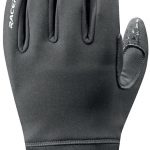THIN IS IN – NORDIC UPDATE
Politics may be more polarized than ever, but gone are the days of skiers hating snowboarders and both wondering about those hippy skinny skiers. Today we’re fans of anything that slides on snow. The aerobic workout of cross-country skiing may not be for every adrenaline-powered skier, but skate and classic techniques offer plenty of cross-training benefits, from balance to fitness. And with updates in technology and design, cross-country skiing is getting easier. The next time you want to socially distance in winter, lose weight and get in shape, try out some of this new gear—and point it down the longest hill you can find. Then tell us 45mm-wide skis aren’t exciting enough.
Atomic Redster S9 Gen S

This is going to sound familiar to downhill skiers who remember the 1990s: Atomic took the traditional straight skate ski and added 7mm of sidecut. It makes the ski feel more stable and efficient on edge. Then Atomic started adjusting the binding position. The included Prolink Shift-In binding has six positions to easily move the friction point for different conditions. The S9 comes in only one length and two stiffnesses for different weights. Put it all together and it’s a huge shift in thinking about skate skis. In our tests we noticed the ski felt faster and we felt more confident. It’s an ideal ski to improve on. $949; atomic.com
Rossignol R-Skin Delta Comp

Skins used to be for backcountry skiing only, but increasingly a short strip is making classic technique on groomed trails more user-friendly. Placed under the foot, like on the R-Skin Delta Comp, it adds grip without wax or the friction of scales. $470; rossignol.com
Madshus Nordic 50
Just getting into cross-country skiing? Start here. Designed for recreational skiing, mostly on groomed trails but capable of wandering, this classic-style ski requires no waxing. Like the Rossignol, it has a strip of skin in the kick zone. $500; madshus.com
Fischer OTX Adventure
Part of Fischer’s new Adventure line of do-it-all XC gear, this boot can go from groomed trails to deep untracked snow. The sole is easy to walk in, the hinged cuff offers support for striding and turning, an integrated gaiter locks out deep snow and lots of insulation ensures warm tootsies. $250; fischersports.com
Racer Alpin

We usually see Schoeller’s WB400 softshell fabric in mountaineering gloves. But its high breathability, wind resistance and light insulation are also ideal for cross-country skiing. Racer sewed it into a dexterous design, with seams carefully placed away from pole contact points, added grip in the palm and fingers, and touch sensitivity in the index tip. $90; racergloves.com
SUPER LAYER
Biomapping places more insulation where it’s needed and more breathability in hotter zones. Seamless construction ensures no annoying bumps or irritating lines. Odlo’s Natural + Kinship baselayers combine the two into tops and bottoms. The company uses a mix of mostly merino wool for thermoregulation, with polyester and polyamide for durability and softness, and a touch of elastane for stretch. High-tech knitting weaves it into a fit that hugs the body for ideal moisture movement, warmth and layering. Top: $160, Bottom: $115; odlo.com



